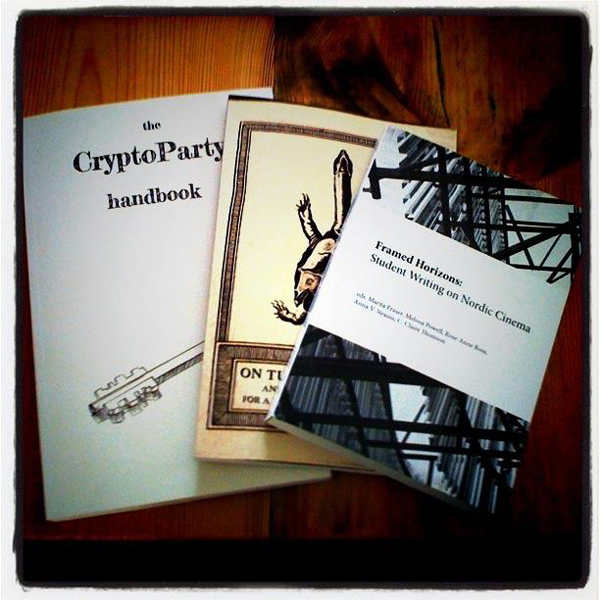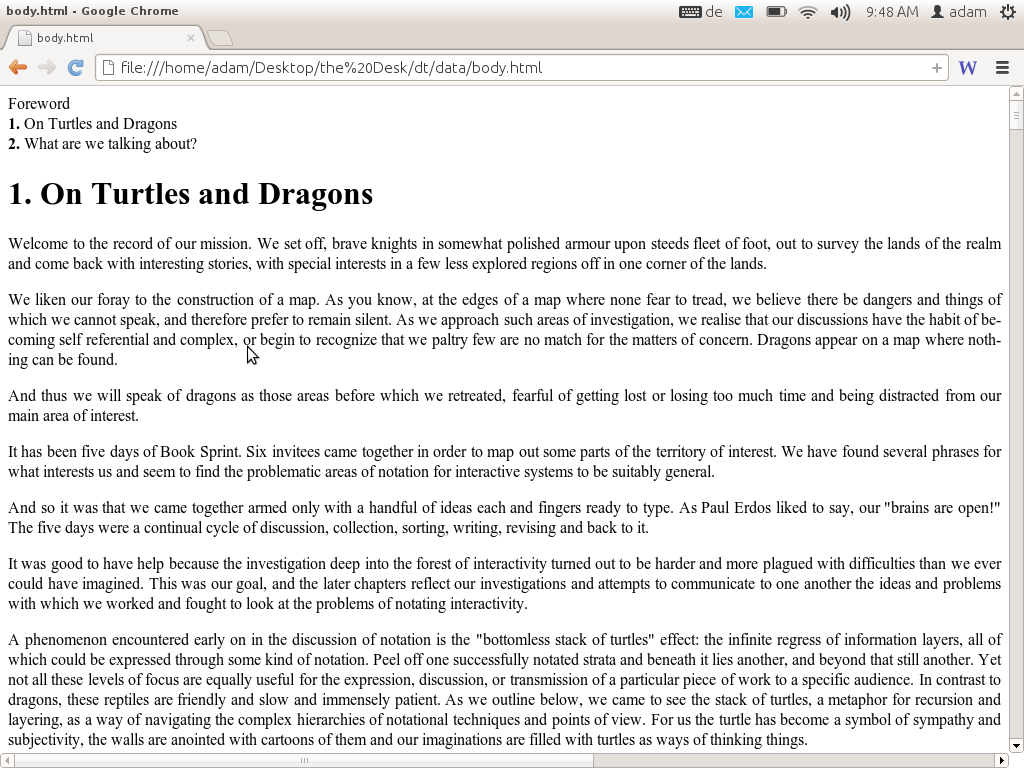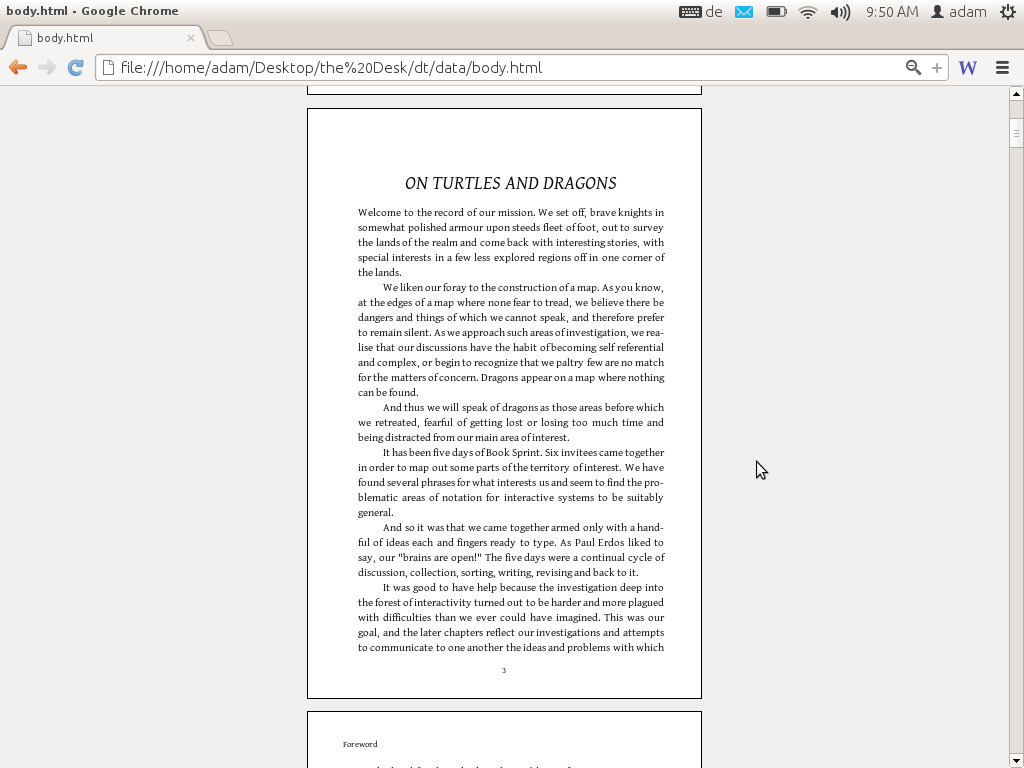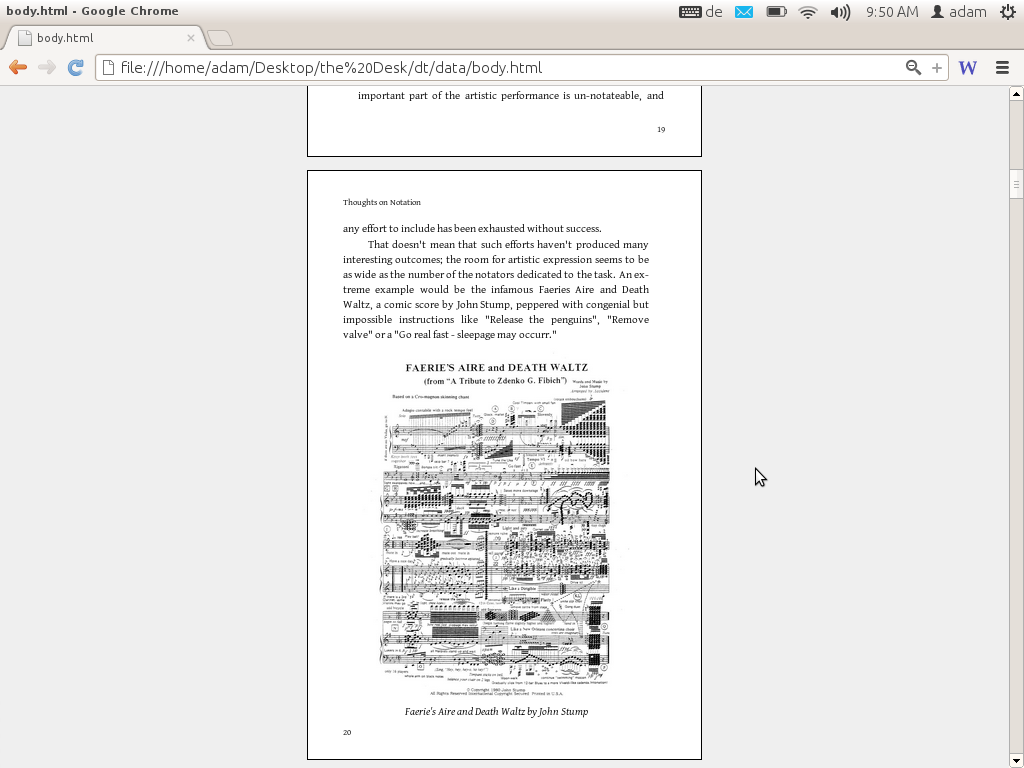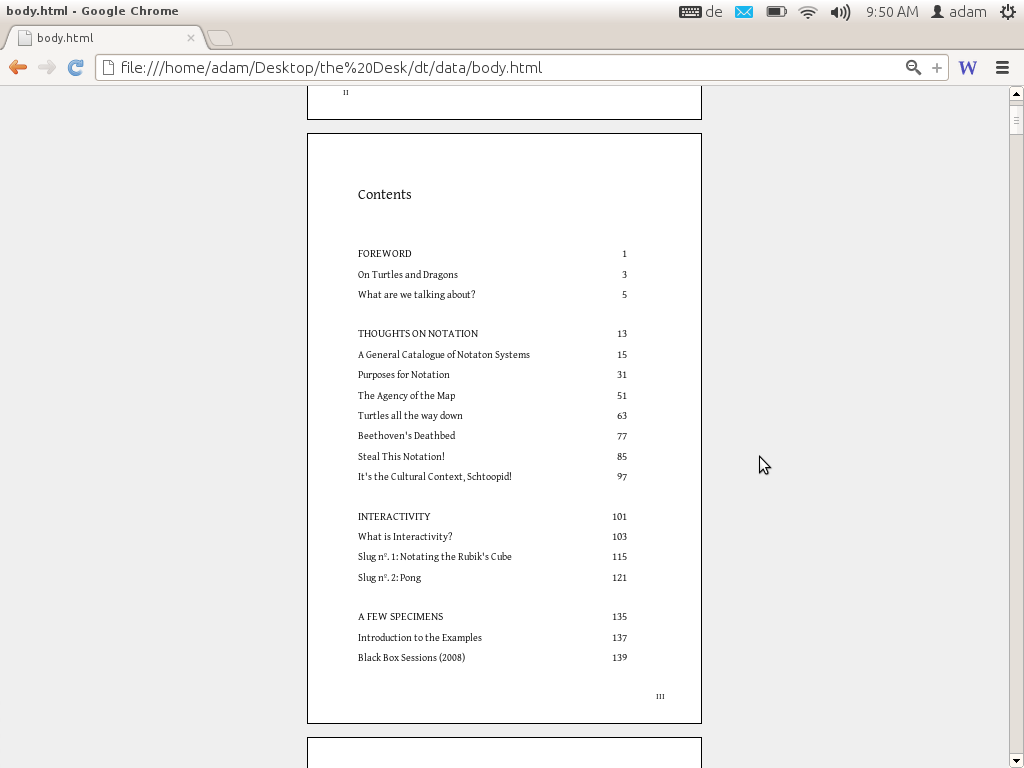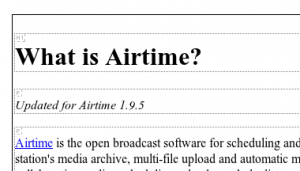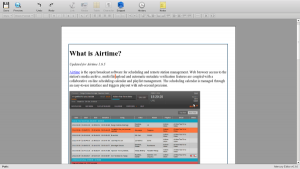Xerography—every man’s brainpicker—heralds the times of instant publishing. Anybody can now become both author and publisher. Take any books on any subject and custom-make your own book by simply xeroxing a chapter from this one, a chapter from that one—instant steal!" —Marshall McLuhan, The Medium is the MESSAGE
This vision from McLuhan is of an analogue future. A future of analogue media and analogue networks. It would take digital media to realize his vision. Webpages being the networked document of our time enable the kind of instant steal that McLuhan foresaw. With free content licenses and simple tools for importing content from other books or other libraries, we can borrow enormous amounts of rich information to help us build the books we want.
In a recent Book Sprint on Basic Internet Security, 9 chapters from 3 existing manuals were reused – that was 15,000 words that we did not have to create afresh. Of course the material needed some work to fit the new context, but it was still a substantial time saver and extended the scope of the book well beyond what we could have produced in the time we had.
This was really quite amazing for me to see. The idea of reusing content was envisioned from the moment FLOSS Manuals was built, but, 3 years later, this was the first real case of substantial re-use. It takes time to build up the materials to make sense of re-use in this way, however, after waiting 3 years, I took a great deal of pleasure in seeing it happen for the first time.
Re-use is not just a time saver, however, there are many other exciting possibilities enabled by re-use. Re-use is also about translation and recontextualisation. Re-use is about updating books and improving them. Re-use is about taking content and making it work in your language. Re-use is about enabling anyone to get your content to their audience and in the form they need it. Re-use is also about allowing you to re-use your own work, since often publishers hold the copyright and do not permit authors to update, re-use, or improve their own work.
Re-use helps you make the books you want to make faster and get them to the people you want to have them in a form that suits them best.
Re-use, despite its attractive opportunities, is an issue that existing publishing models are going to find very hard to work with. This is because full engagement with re-use leads to the federation of content and the inevitable possibility that anyone can publish any book you have made. Taking a book, not changing a word, marketing it and selling it, is re-use. It is going to be difficult for publishers to agree to this consequence while tapping into the many opportunities for new business models around this idea. But that is not our problem. We want books to be freely re-used and we should find the most open channels to do that.
The core of re-use is primarily about extending the usefulness and life of a book.
One of the differences between a book and a newspaper, is that we expect longevity from a book1. We expect a book to have value beyond the date printed at the top of the page.
The web offers enormous opportunity for the life of a book to be increased further than it is now. The Open Educational Resources (OER) movement is alive to this idea. They imagine you could take a mathematics text book and update it for the following year’s curriculum, or combine it with another book to better suit your students’ needs. Or correct it if you found a mistake, or translate it. Major advantages in all sectors, not just education, can be attained by keeping books alive.
Books currently have too long a life as a static object. They have become too static as a result of Gutenberg’s invention. ‘Static-ness’ is now a part of a book’s genetics. ‘Readers’ find it even hard to pick up a pen and write notes in the margin of books. Margin notes are frowned upon by libraries. We have forgotten that notes like this (‘marginalia’) were once very common. When paper was hard to come by, the margin notes were often where books were written.
So books did not always have a static genetic code. They once were places for lively discourse and for book production itself.
Interestingly, there is a kind of slow historical regression taking place because of digitally-networked media. There are a few projects (notably commentpress2and the yet to be released Social Book by Bob Stein, and some ebook readers) that enable types of margin notes in digital books. In the case of Commentpress these notes are the point of the book – a place to start discourse (almost literally) around the book.
However, we still cannot seem to embrace changing the book itself. It is one thing to allow ourselves to leave margin notes in this new era of digital documents, since we know the source will not be affected. We can easily spray comments around the book as the book itself stays intact. Can’t we allow ourselves to change the book too?
Books have always been changed over time. Ben Fry did a very nice visualisation3 of the changes Darwin made to his Origin of the Species over 6 editions. It is a nice work showing substantial changes, including the addition of an entire new section in the last edition. The Origin of Species was an evolving thesis and the book was kept alive over the period of Darwin’s life. The book’s ’life’ ended with Darwin’s.
But why must a book die with the author? Why can’t anyone contribute to a book to keep it alive, even during the life of its author? We feel somehow that this is breaking some kind of moral law (as well as copyright law). Forgetting copyright for now – why not improve the original? Why can’t we take a book, any book, and improve it, perhaps even while the author is still alive? Why is that idea so difficult for us to engage with?
Leaving copyright licensing aside for the moment – one part of the puzzle involves the overly rarefied respect for the authoritative version. The version born from the author. We (you or I) are not that author and so we cannot know the author’s intent with all its nuances. We should not meddle with a work because we would be breaking our unspoken contract to preserve the author’s intent. It would not be considered an appropriate thing to do. We do not have the authority to do it. The authority is inherent in the author alone – so much so, that the role of the author to the book is analogue to the role of ‘god’ to its creation. The author is the creator.
Sound like I am overstating the cultural value of the author? In William Golding’s Lord of the Flies, the children use Piggy’s glasses as a magnifying glass to start a fire. However Piggy was short-sighted and hence starting fires with his glasses would be impossible as they are concave, and concave lenses disperse light4 . You cannot start a fire with concave lenses. Would we allow anyone to alter the book to correct this rather trivial fact? No. No, because the book is Golding’s world and in Golding’s world concave lenses start fires. Golding is the creator. He has the authority to change his creation and we do not.
I think that is a very deeply ingrained principle.
For this reason, many recoil in horror with the prospect of changing great works of art. We are in some way tampering with the mind of the creator – a kind of god. However, we must remember that if we change a book, we change nothing in the original. Books, unlike paintings, are not one-of-a-kind pieces. That is precisely why the age of Gutenberg has such an impact – books could be duplicated. So when we change a book (I’m not talking about historical paper artifacts, just the abstracted contents) we don’t destroy anything, and this is particularly true in the digital age. In fact, the digital age gives us more tools to take care of the provenance of a work. Hence we can easily have Pride and Prejudice by Jane Austen and Pride and Prejudice and Zombies by Jane Austin and Sethe Grahame-Smith5 .
How to we develop a culture where it is OK to change a book? Free Licenses are meant to change that but in my experience it is still difficult to get people to take hold of explicit free license clauses that enable derivative works and improve a work. They feel they lack the mandate to change. Many people still ask if they can improve a free/open book work even though the mandate to change a work is loudly passed on and articulated by ‘the creators’ to anyone.
In fact, it is difficult to pass on the mandate to change. It doesn’t help that large projects like Wikipedia are working against this mandate. Wikis and Wikipedia have managed to introduce ideas of participative knowledge creation, but as Lawerence Liang6 has argued, Wikipedia is possibly trying to establish itself as an authoritative knowledge base which also has the effect of revoking the mandate to chang,e as has been experienced by many new contributors that find their edits reversed.
I think we will leave this all behind in time, but it’s going to be a long time.
All books can be improved – even the most sacrosanct literary works. However we live with the notion of the authority of the creator. The only thing that can change that, is to take the rights afforded to us by free licenses and experience and value the possibilities open to us if we act differently.
We need living books, and under copyright we have to fight very hard to keep them alive. The first step it to take someone else’s book and improve it.
